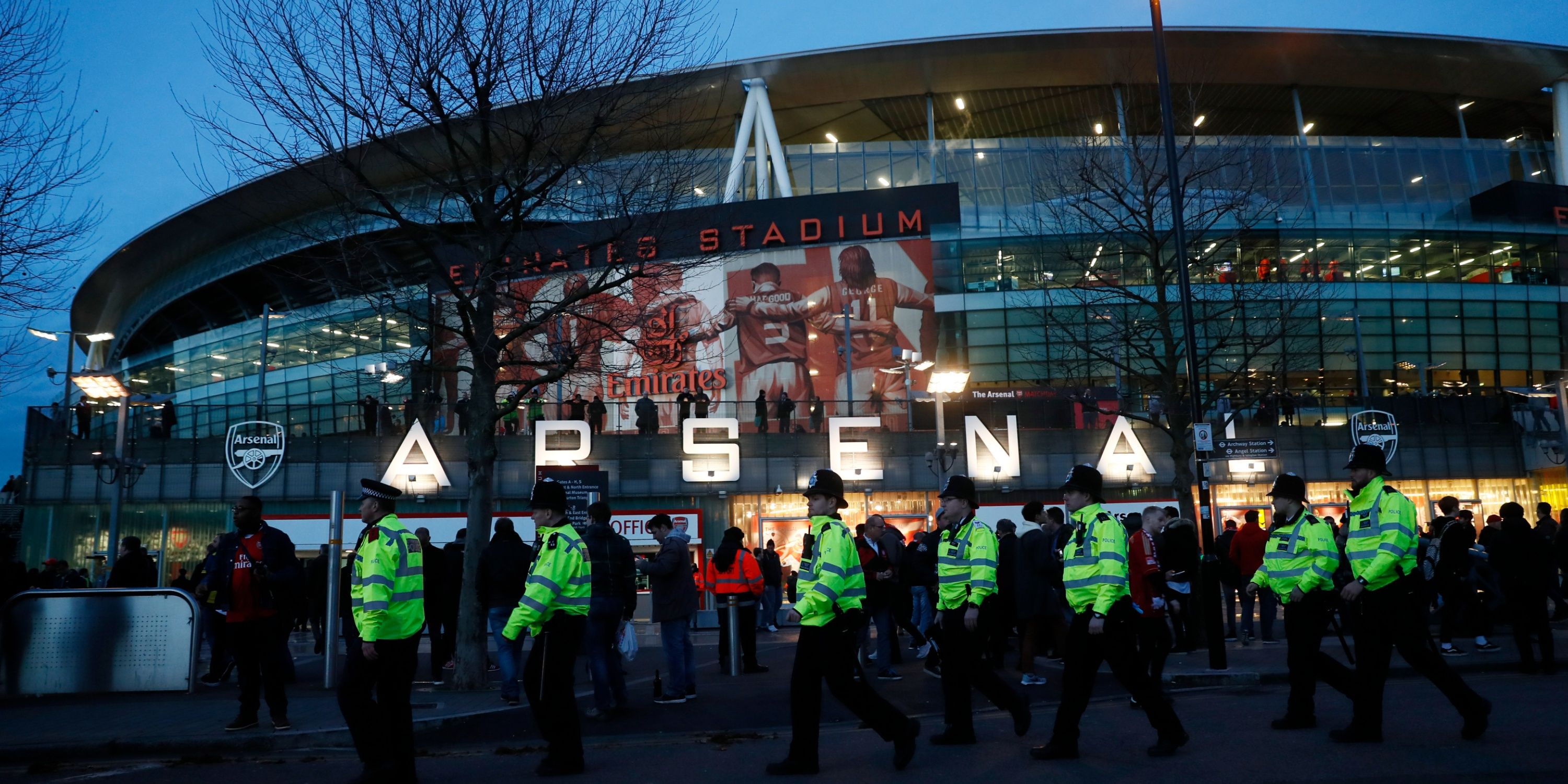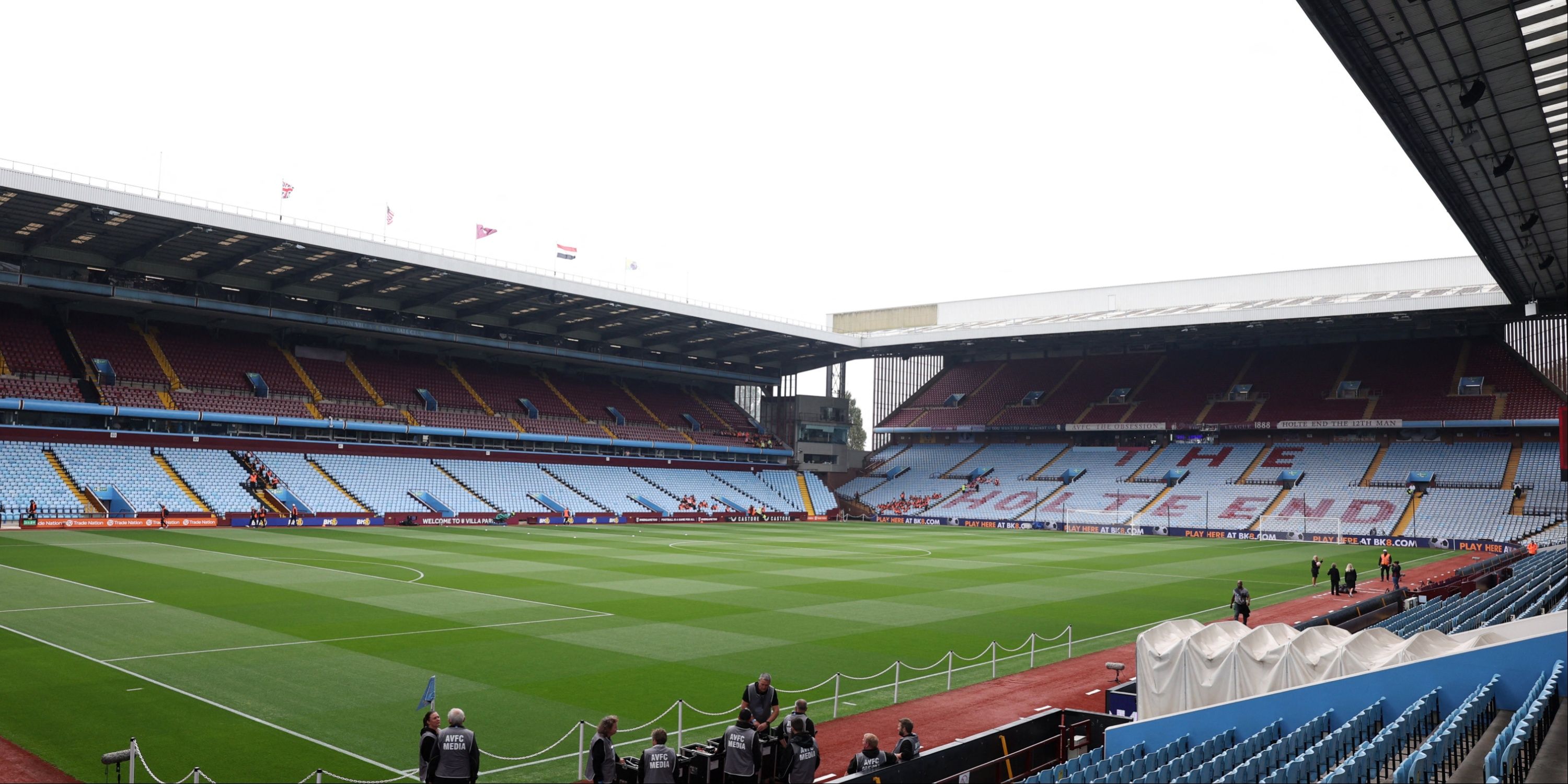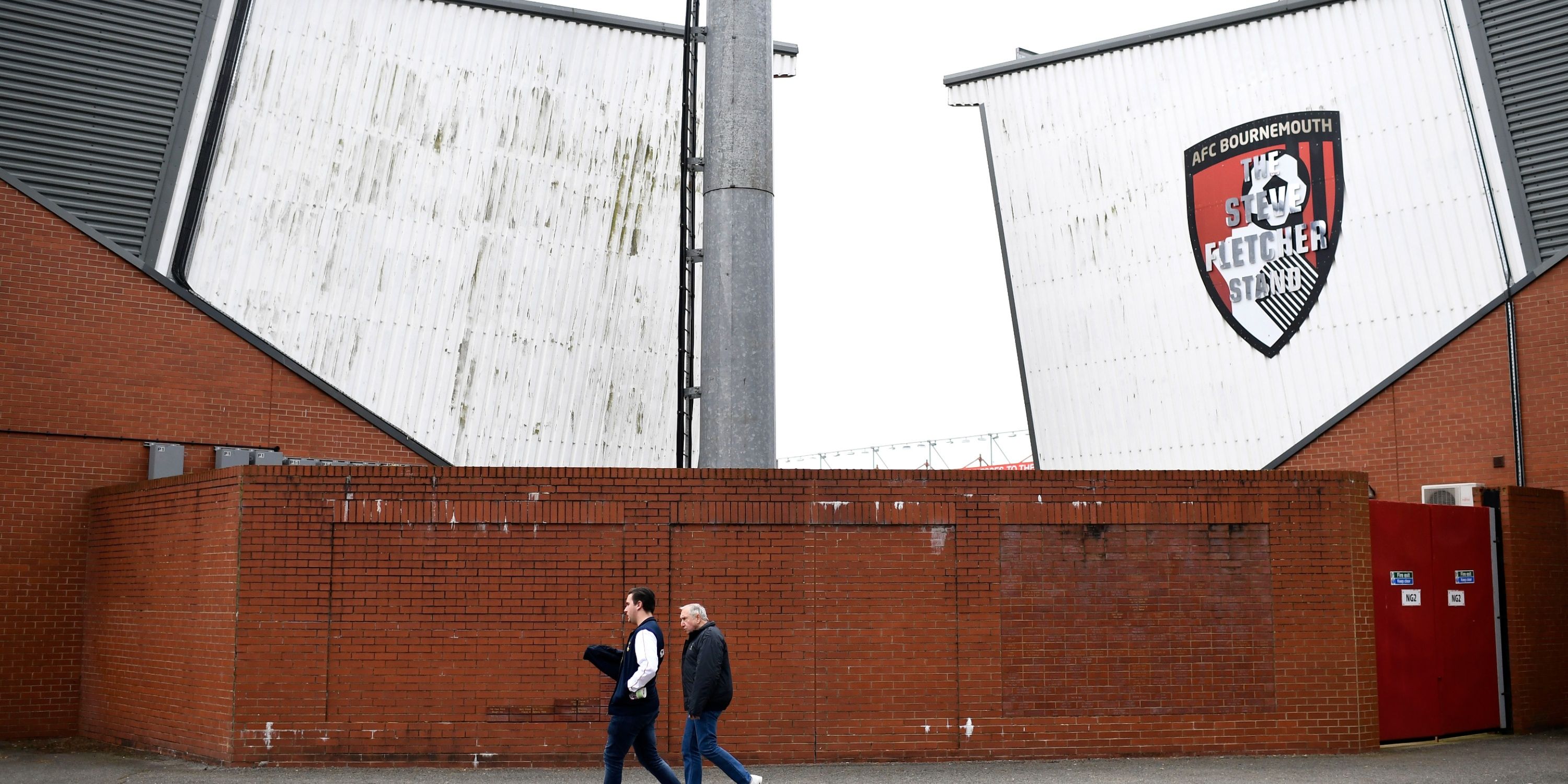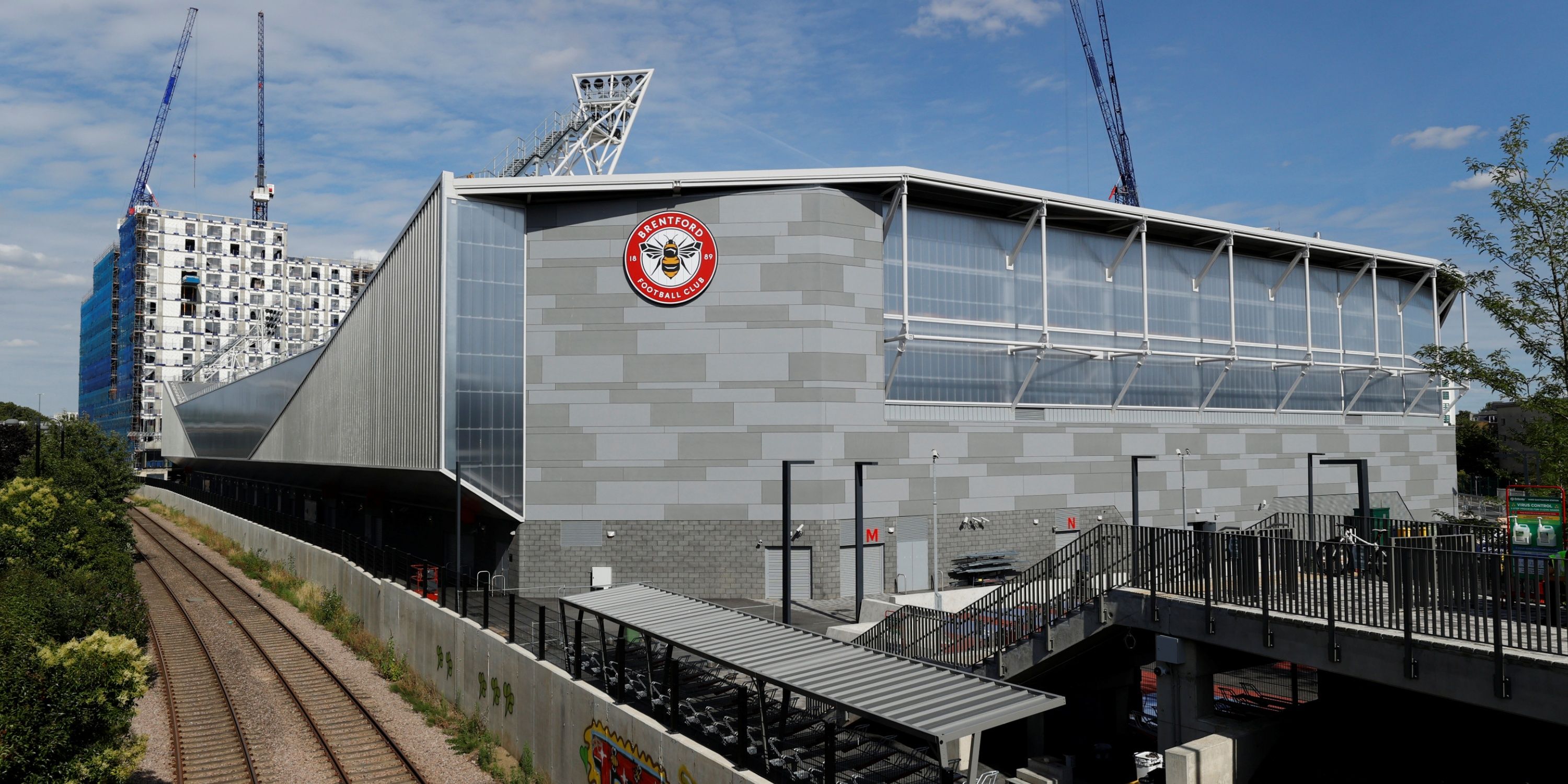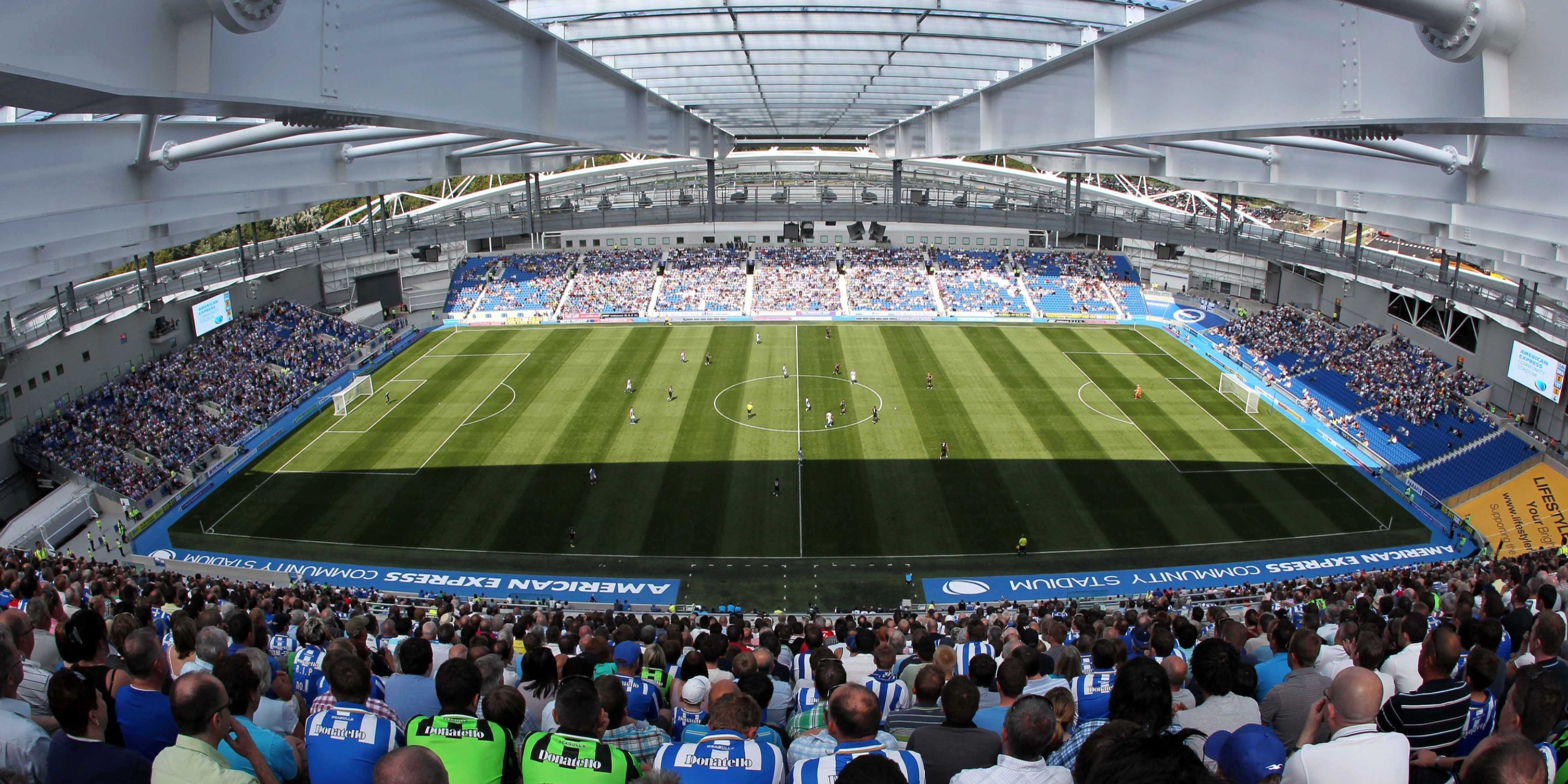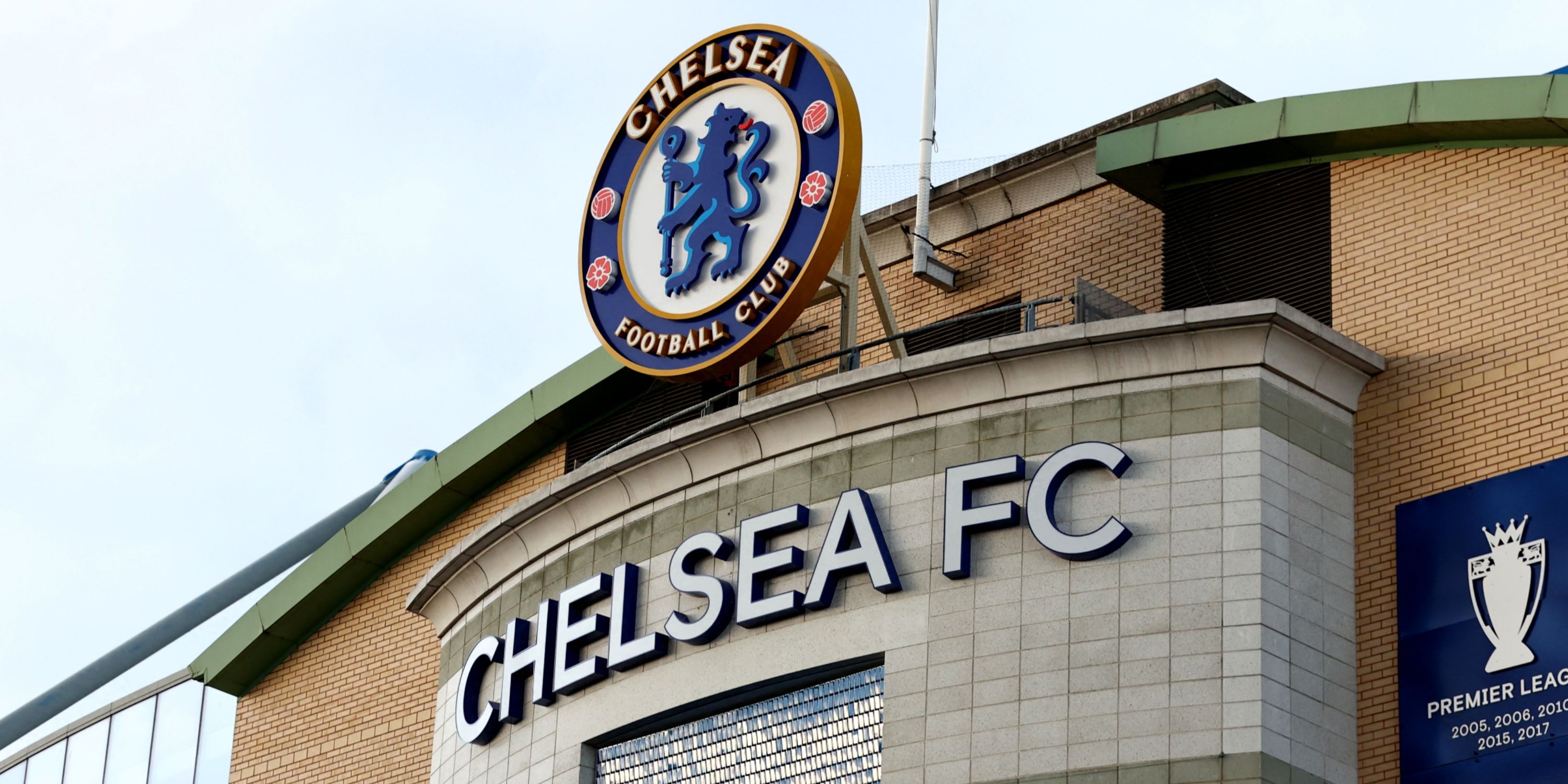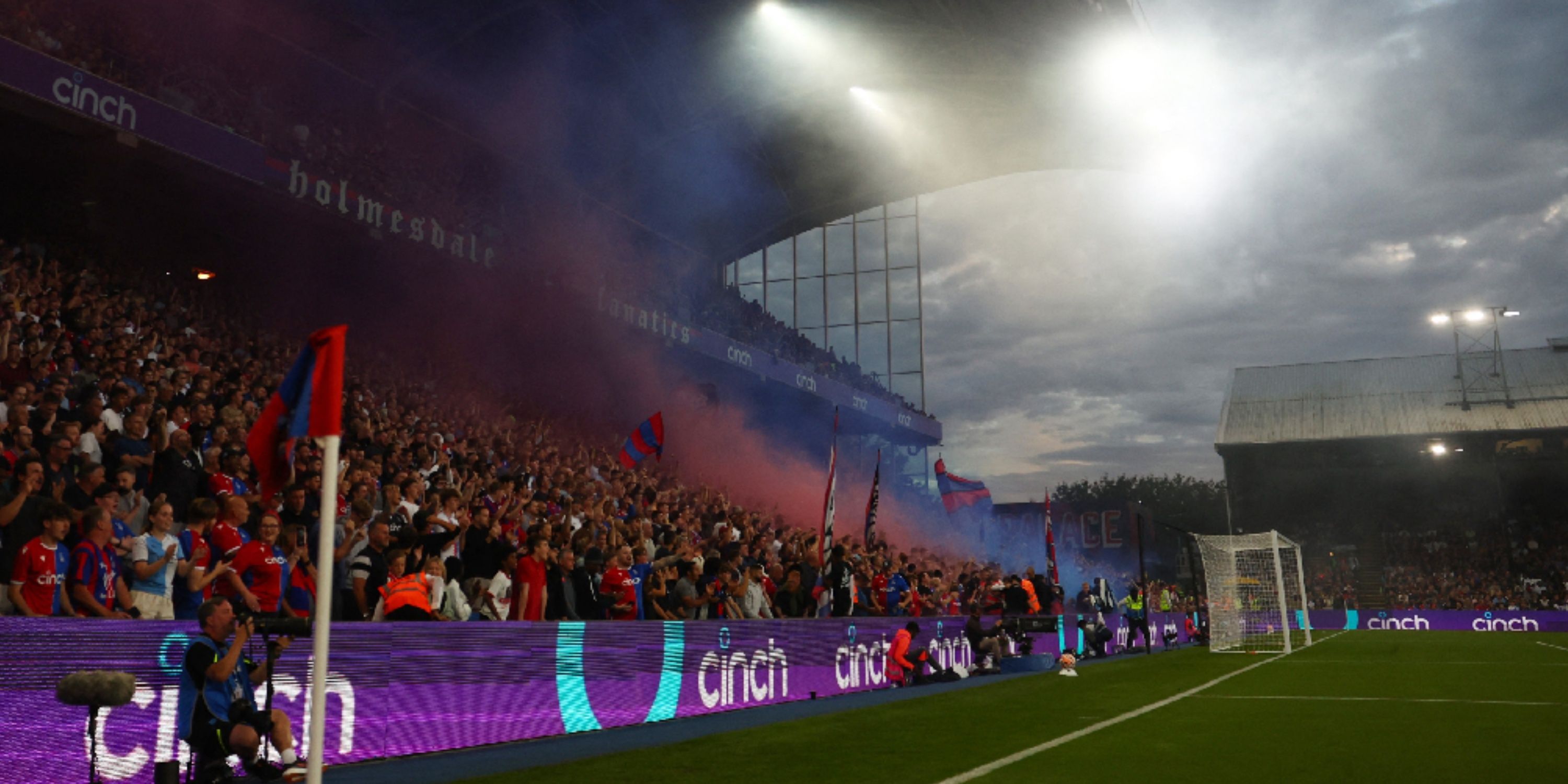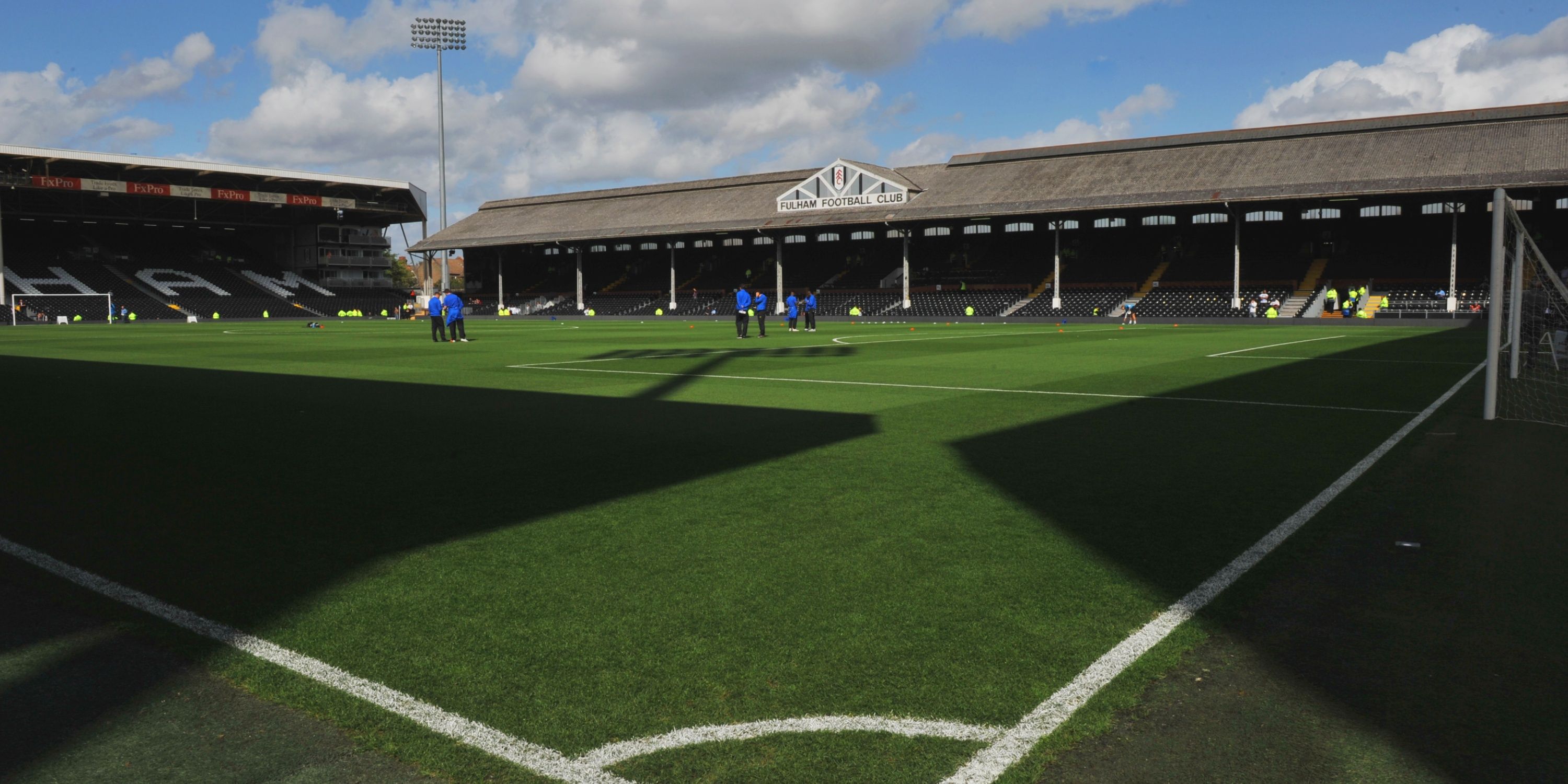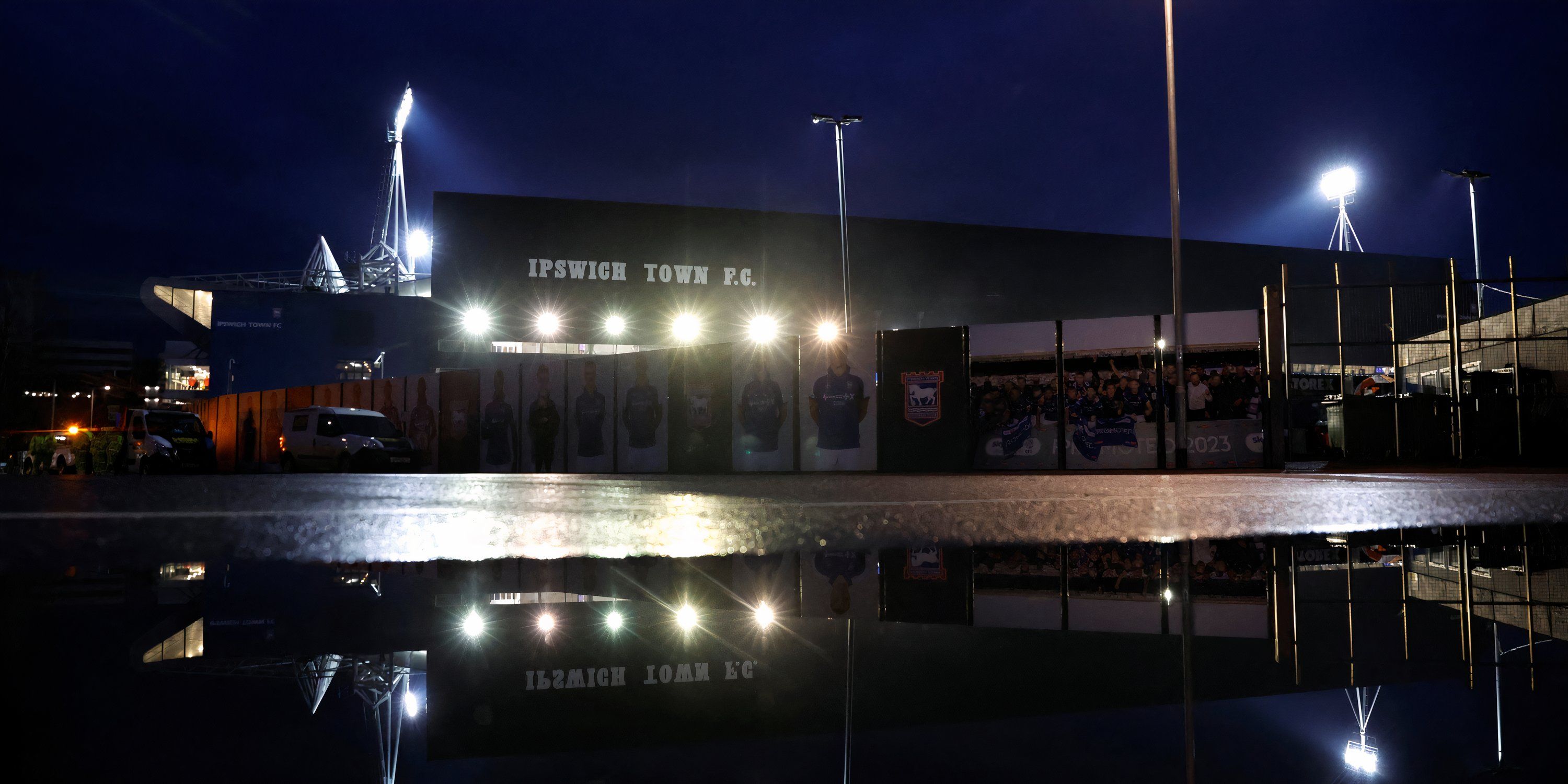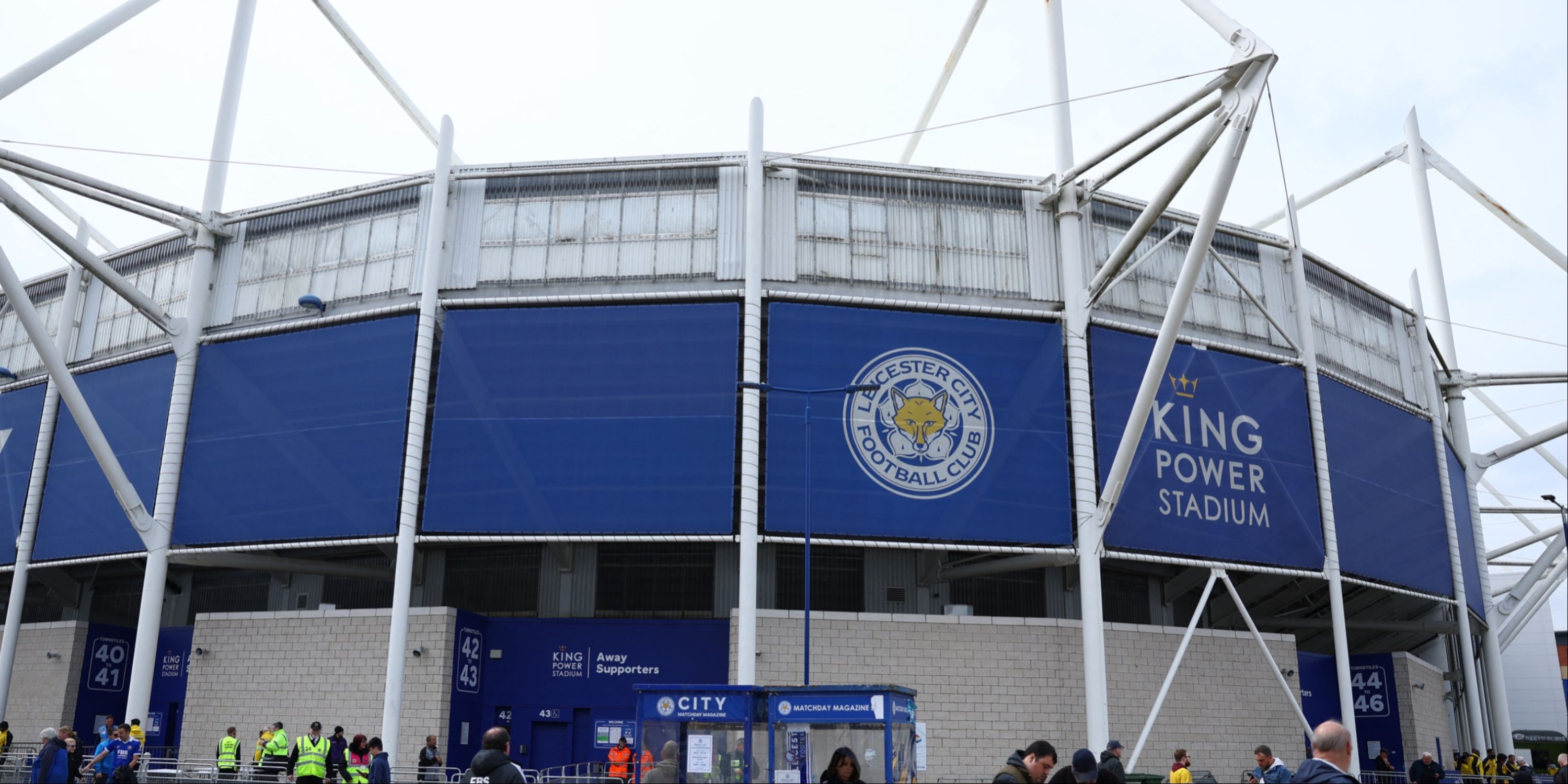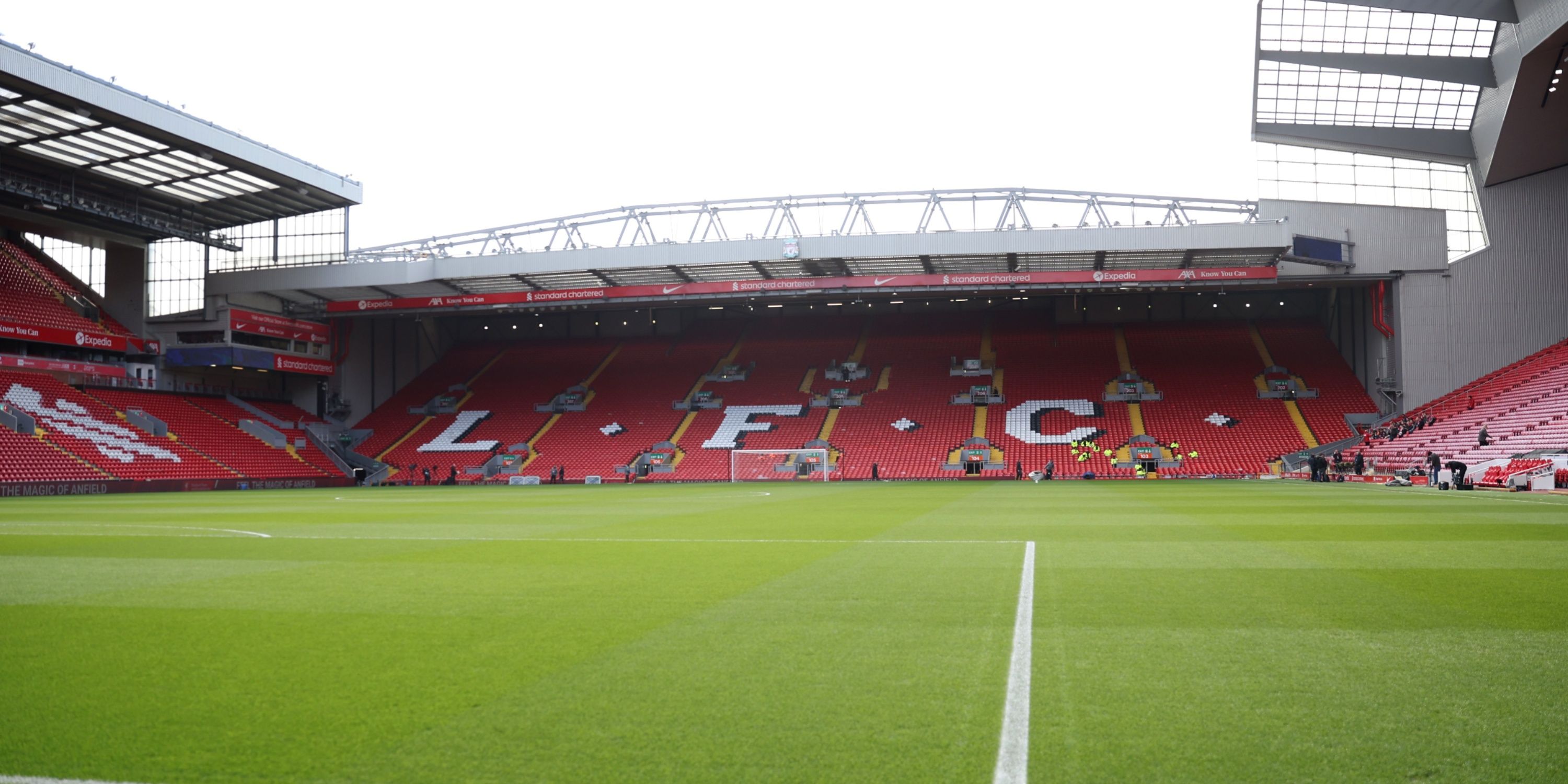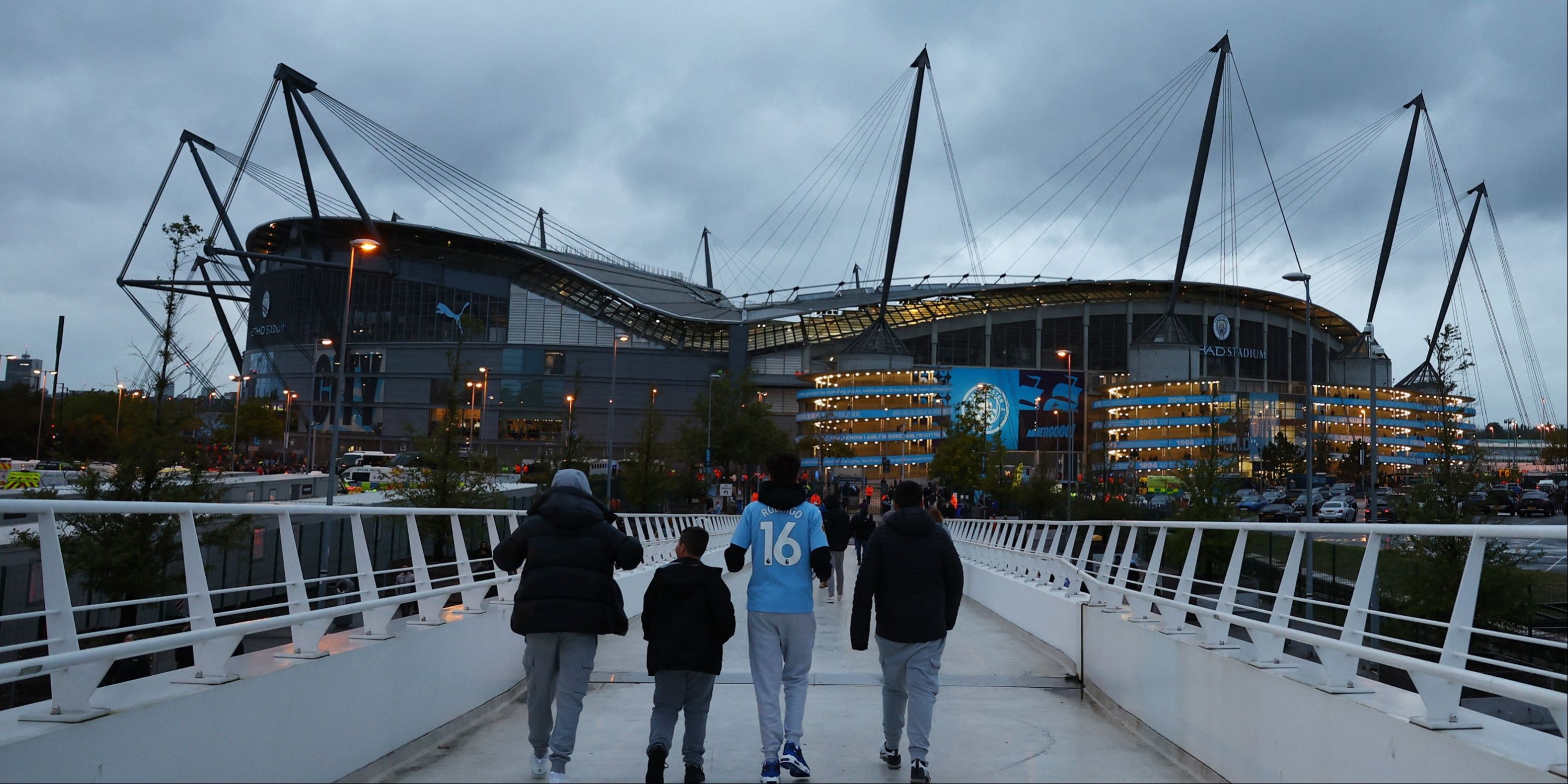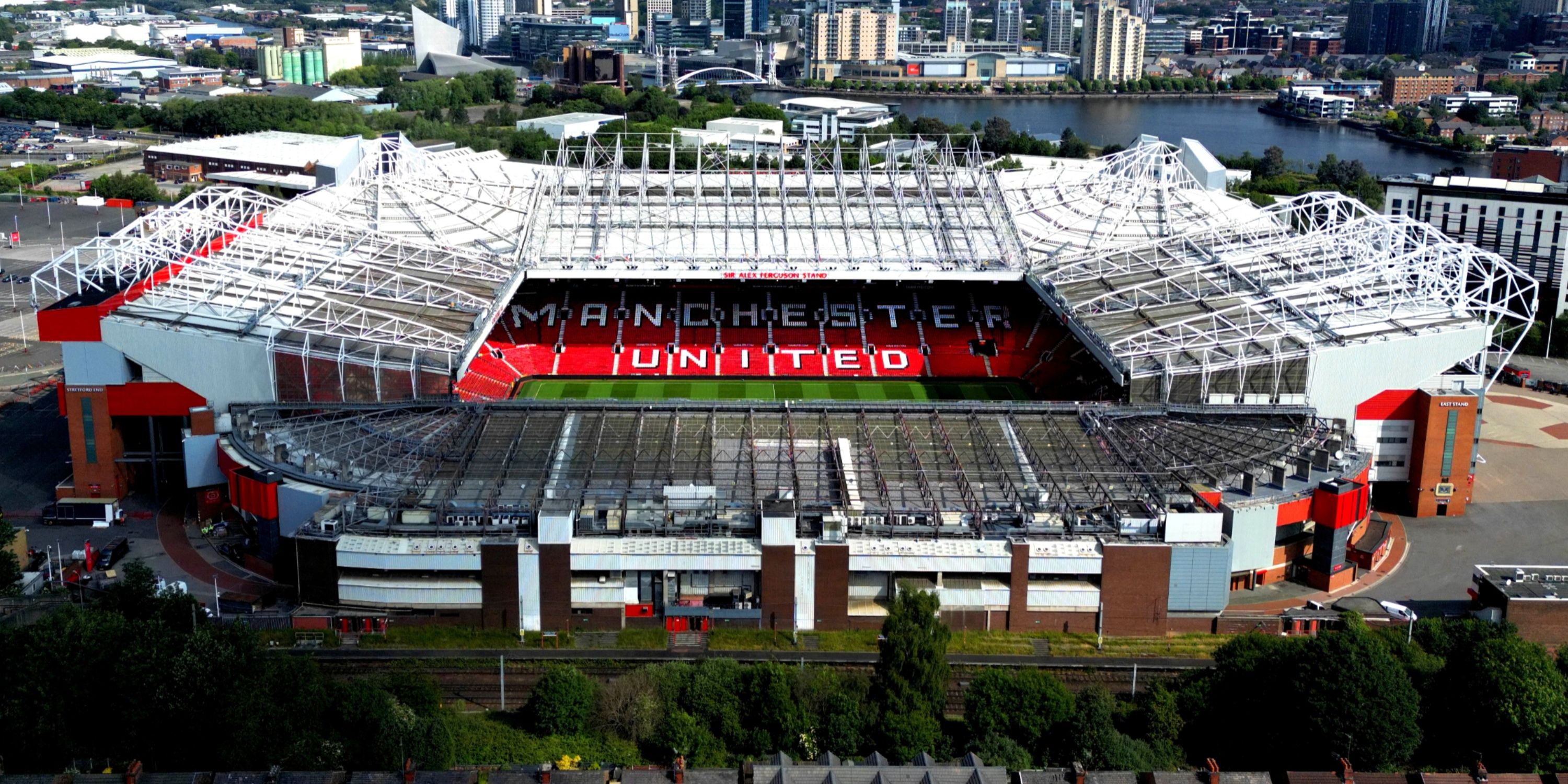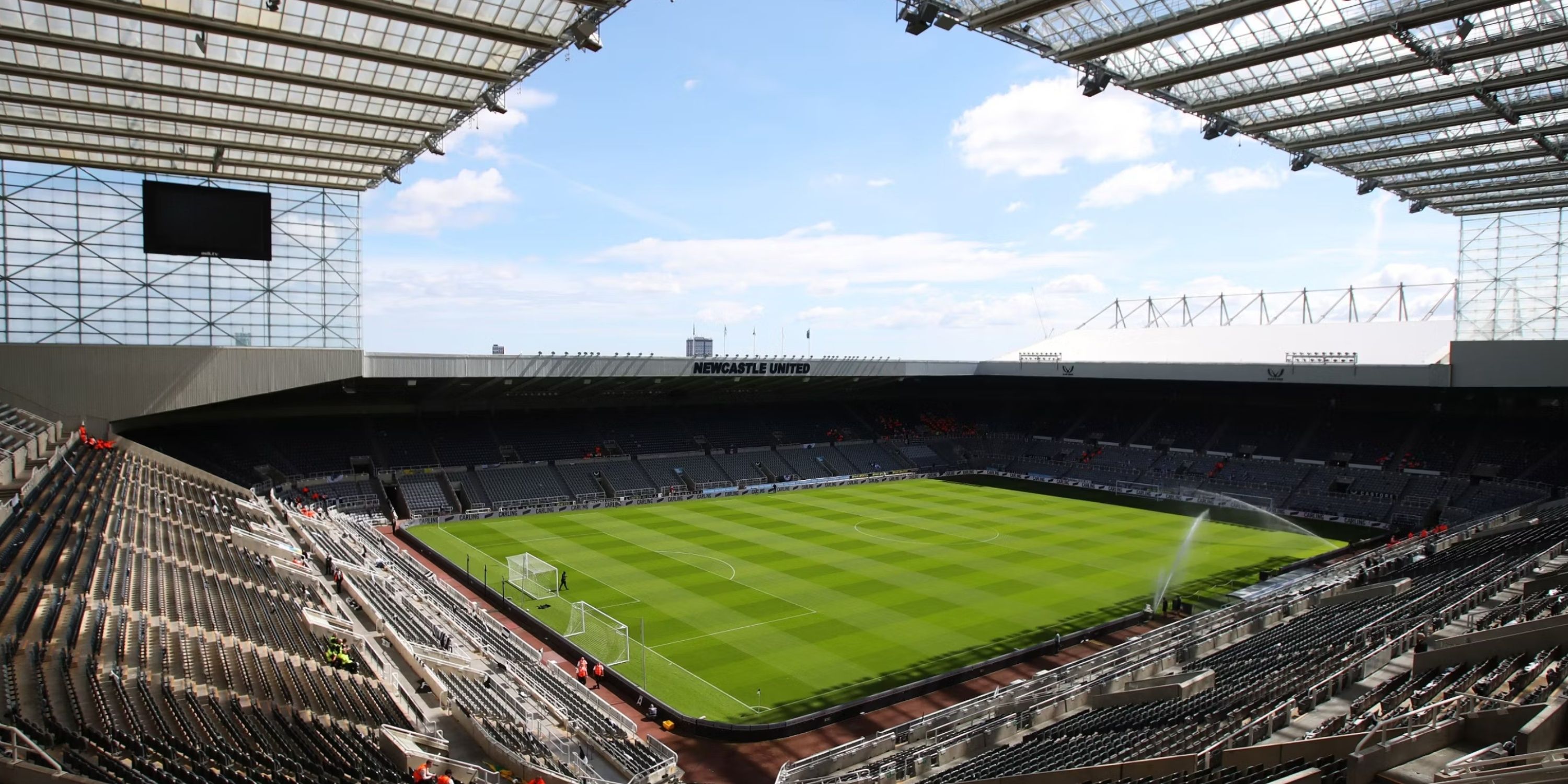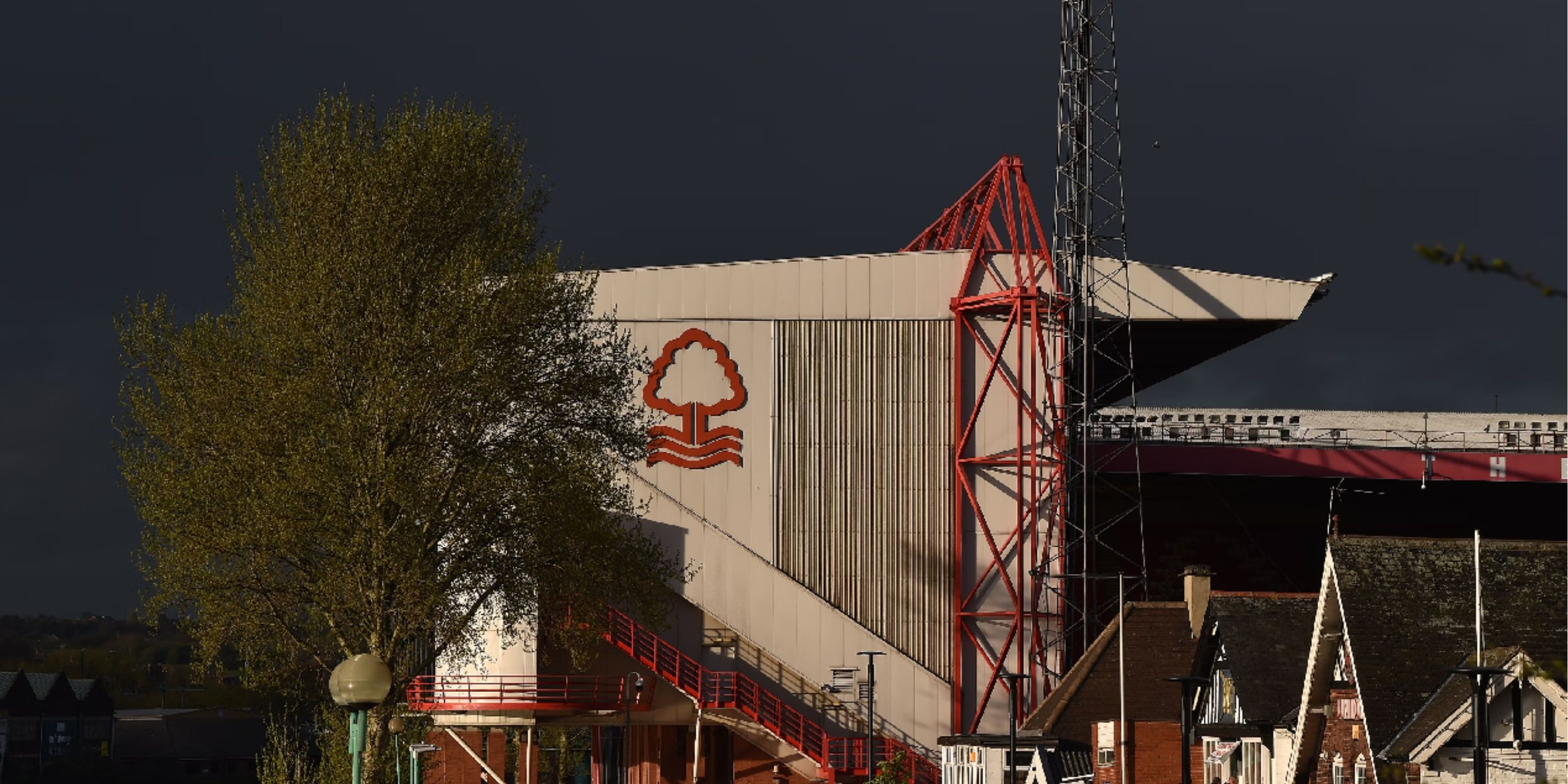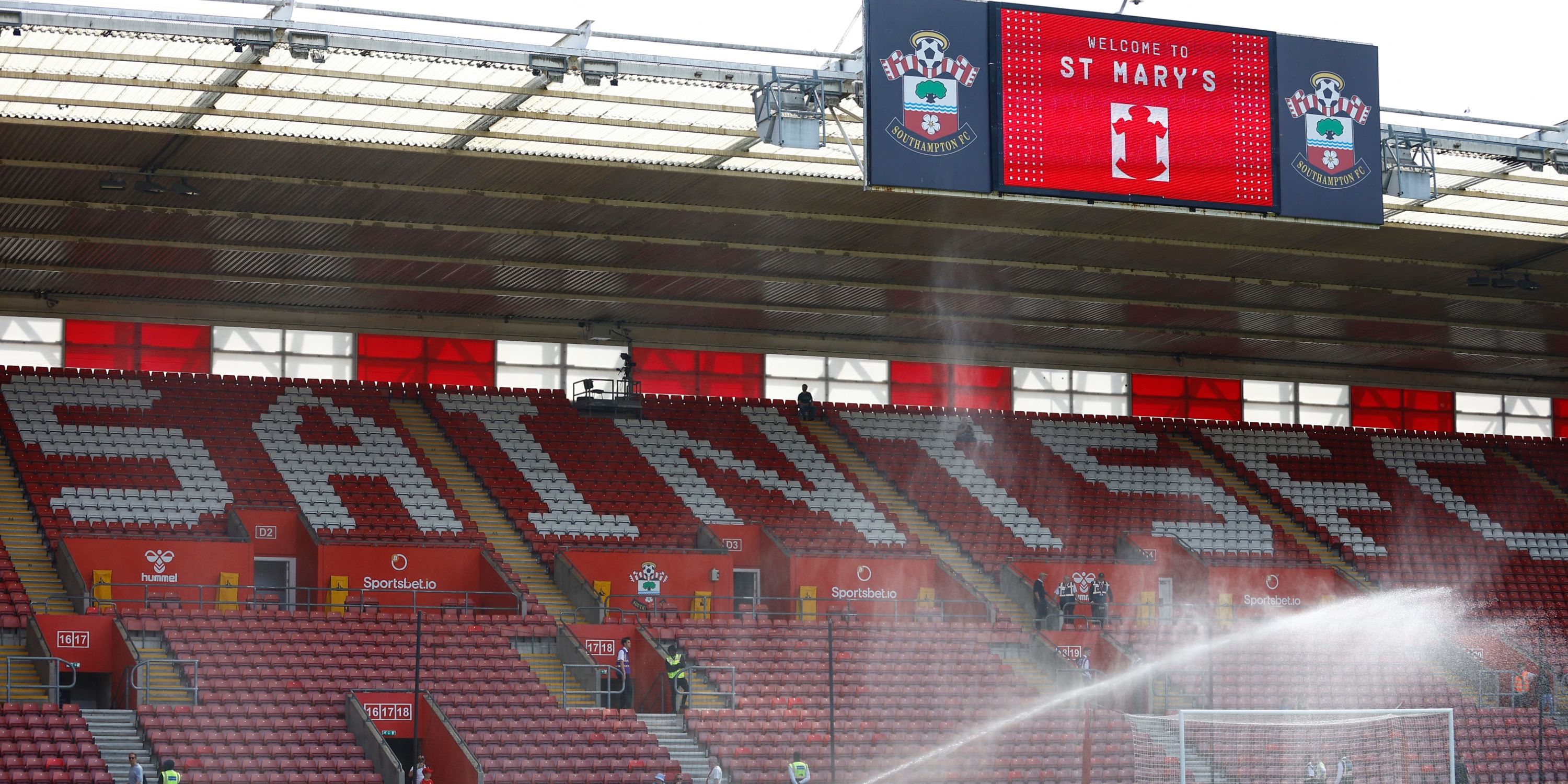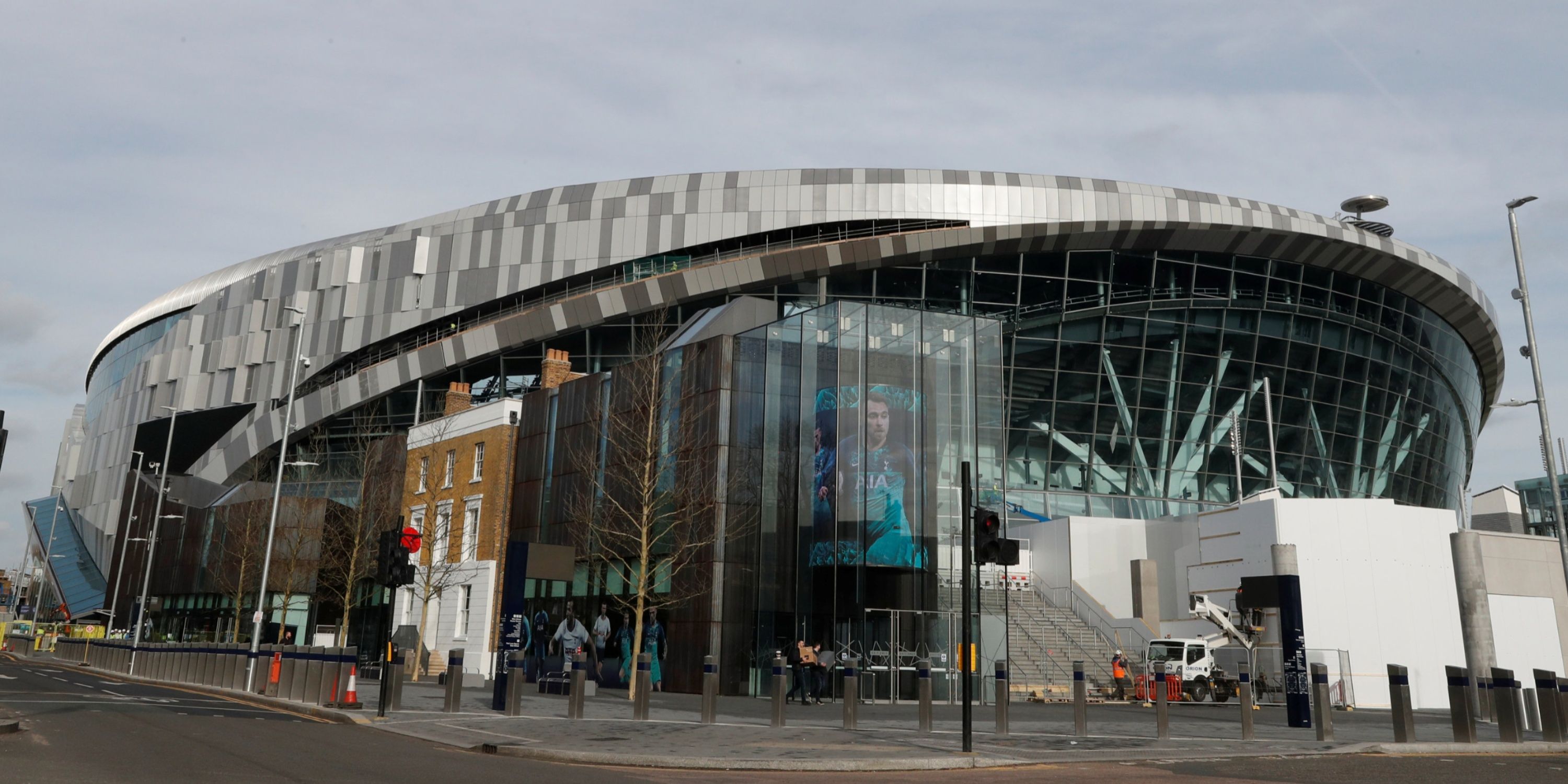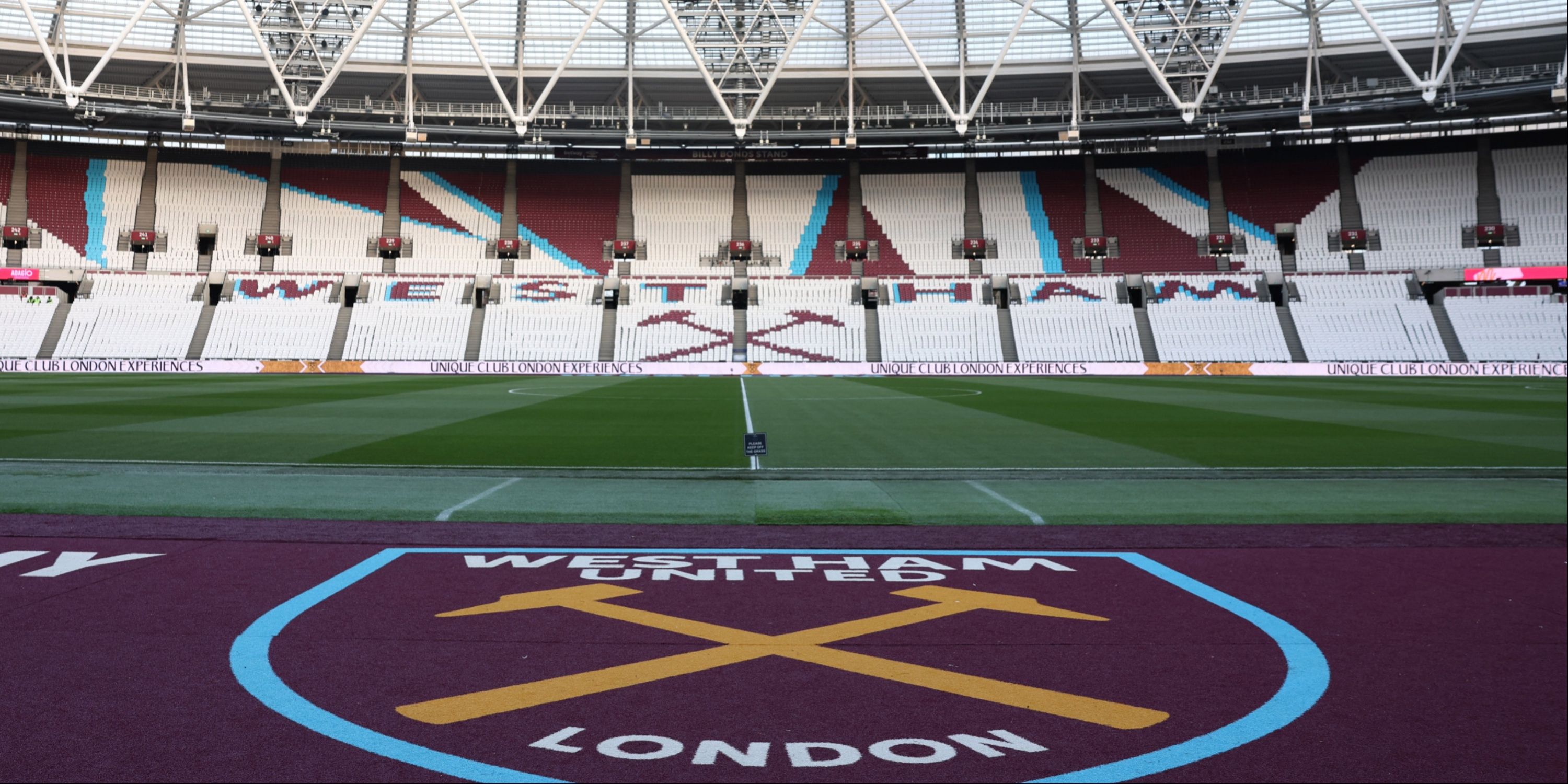Highlights
- Premier League clubs are modernising stadiums to improve the fan experience and increase revenue.
- Whether it’s moving into a new home like Everton or redevelopment like Liverpool, clubs up and down the country are trying to maximise what they can from their homes.
- Sir Jim Ratcliffe has ambitious plans for Manchester United and their stadium following INEOS’ takeover of the club.
The Premier League is well known for not just providing arguably the most entertaining league in the world, but also some of the best atmospheres and stadiums. Football is constantly changing, and along with that is the need to modernise its stadiums, whether that’s increasing the capacity to help increase match-day revenue or to update the stadium facilities. Some of the best stadiums in world football are geared towards improving the fan experience and finding ways to keep supporters inside the stadium facilities instead of going elsewhere for a pre-game drink or food.
It makes perfect sense for Premier League clubs to improve their facilities, even if it comes with a short-term cost. The revenue it can bring can then be put towards things like transfers, which are important for clubs to move forward. After the pandemic, there was a sense that clubs’ attitudes towards their supporters shifted somewhat. The majority are now looking at creative ways to improve the supporter experience.
Below is every Premier League stadium, its current capacities, and any potential plans to expand or move entirely. Some teams are happy with their current homes, while others are working on improvements right now or plotting another place to move into.
|
Stadium Development Update For Every Premier League Club |
|
|---|---|
|
Club |
Current Work/Upcoming Projects |
|
Arsenal |
There are no current plans to improve Emirates Stadium. |
|
Aston Villa |
Plans to increase Villa Park’s capacity by 8,000 by 2027 have been put on hold. The club are working on providing further premium seating ahead of the 2024/25 campaign. |
|
Bournemouth |
The plan is to build a new training ground at Canford Magna, which could be ready by the autumn of 2024. As well as this, Bill Foley is exploring options to build a new stadium with increased hospitality. |
|
Brentford |
Safe standing has recently been introduced but no current redevelopment plans as the club have just moved into the stadium. |
|
Brighton |
The new fan zone at the AMEX Stadium is expected to be completed ahead of the 2024/25 season. There are also plans to build a 10,000-seater stadium for the women’s team. |
|
Chelsea |
Spent £80 million on a plot of land next to Stamford Bridge. Plans for a new stadium are unclear, but if redevelopment happened, they would have to play at a different home venue for up to five years. No concrete plans are currently in place. In April 2024, Chelsea announced that they have appointed a new task force to explore options for redevelopment at Stamford Bridge. |
|
Crystal Palace |
Increased capacity of the Main Stand from 5,200 to 13,500, alongside various hospitality facilities. Preliminary work began in the summer of 2024, with major construction to take place later this year. The new stand is planned to be completed by the start of the 2026/27 season. |
|
Everton |
The new stadium located at Bramley Moore Dock is planned to be completed for the 2025/26 season, but could be delayed due to cash flow issues and takeover uncertainty after the 777 Partners agreement collapses. |
|
Fulham |
The upper tier of Riverside Stand will be ready at some point in the 2024/25 season. New hospitality facilities and experiences, including a rooftop pool, are scheduled to be completed in December 2024. |
|
Ipswich Town |
Plans to redevelop Portman Road in the future and increase the capacity by expanding the Cobbold Stand. The “masterplan” also includes the development of a hotel, a new multi-storey car park and an aquatic centre next to the stadium. |
|
Leicester City |
Plans to increase the capacity of the King Power Stadium to over 40,000 by adding 8,000 seats in the East Stand were approved by the council in December 2023. The redevelopment of the stadium also includes the building of a new business centre, fan store, hotel, events arena and residential flats. |
|
Liverpool |
Liverpool just registered their biggest-ever attendance at Anfield for a league game following the completion of the upper Anfield Road Stand expansion. Capacity is now over 60,000. |
|
Manchester City |
Extension of the North Stand is scheduled to be completed in late 2026 and will see the capacity increased to over 60,000. |
|
Manchester United |
Sir Jim Ratcliffe has proposed building a “Wembley of the North” on the land next to Old Trafford. Plans to redevelop Old Trafford or build a new stadium entirely are to be decided in the middle/end of 2024. |
|
Newcastle United |
Discussions over adding 13,000 seats to the Gallowgate End and South Stand. Following the results of a feasibility report, Newcastle will push forward with plans to redevelop the capacity of St James Park to over 60,000, instead of moving to a new stadium. |
|
Nottingham Forest |
Original plans to build an upper tier in the Peter Taylor Stand and increase capacity up to 40,000. Plans were halted due to a lease extension disagreement with the local council. The club hierarchy are now exploring other areas to build a new stadium. Forest owner Evangelos Marinakis expressed his desire to build a bigger facility with greater commercial facilities elsewhere. Shipping container in the corner of the ground to be installed this summer to push the capacity above 30,000, along with safe standing sections in the Bridgford Stand. |
|
Southampton |
In April 2024, Southampton announced that more than 2,500 safe-standing seats had been added in the Northam Stand. More rail seating will be installed in the summer. As well as this, Southampton have submitted planning proposals to build state-of-the-art fan parks and entertainment spaces on the site of the ground. |
|
Tottenham Hotspur |
The new stadium is renowned as one of the best in the world. It is also used for NFL matches and hospitality revenue has significantly expanded since moving into the ground in 2019. |
|
West Ham United |
There is no planned redevelopment currently, but owners are consistently looking for ways to improve the fan experience at the ground. |
|
Wolverhampton Wanderers |
The club have discussed ideas to increase the capacity to over 50,000 through expansions in the Steve Bull and Sir Jack Hayward Stands. However, there are no recent updates on the proposed renovations. |
|
Correct as of 24/06/24 |
|
Arsenal – Emirates Stadium
Capacity: 60,704
Arsenal moved to the Emirates in 2006, moving from their beloved Highbury. The initial few years at the new stadium brought struggles to recreate the famous Highbury atmosphere, but with the Gunners now challenging for the Premier League title in recent years, the atmosphere has improved massively. The Emirates now generates the kind of atmosphere the club craved when drawing up plans to move stadiums.
The club have not redeveloped the Emirates since their move in 2006. However, some new artwork was revealed outside the stadium in January 2023. Eight panels were created to show the club’s overall impact across all forms of football, from the men’s and women’s sides to the academy. In addition to the artwork, the club unveiled a statue of their former manager, Arsene Wenger, who managed the Gunners for 22 years and won three Premier League titles during that time.
There are currently no plans to redevelop the stadium. However, this is something the club looks at frequently, and there will certainly be talks about improving the facilities somehow. But at present, the club are happy with the Emirates and are looking forward to many more years there, hoping they will soon lift the Premier League trophy again.
The Emirates is the fifth-largest stadium in the Premier League; three of the four larger stadiums have all recently been built or redeveloped in the shape of the Tottenham Hotspur Stadium, London Stadium and Anfield. This shows that the Emirates was ahead of its time in many ways, and will likely remain one of the largest stadiums in the Premier League for years to come.
Aston Villa – Villa Park
Capacity – 42,530
Villa Park is one of several Premier League grounds that have not seen any changes for quite some time now. The last changes made to Aston Villa’s ground came in the 2000/2001 season. Those changes were made by building a larger Trinity Road Stand, which was built from scratch. Since these changes to the stadium, there have been consistent calls for more to be made.
Especially under the lights, when in full voice, Villa Park is a special place to be. It generates a unique atmosphere, and the club are wary of any further changes hampering that. Over 20 years have now passed, and the supporters are eager for the redevelopment of Villa Park. Originally, plans were in place to increase the capacity by 8,000 by 2027, a season before EURO 2028, and Villa Park has been chosen as one of the host stadiums. The additional 8,000 would bring the stadium’s overall capacity to over 50,000. The proposed plans are complicated though. The club intend to completely knock down the North Stand, before wrapping it in the connecting Trinity Road Stand.
The progress has been slow in terms of getting the plans underway after the club ran into multiple problems such as; inflation, lack of transport and on-site parking around Villa Park. The plans require further feasibility studies. It’s a frustrating process but one the club hope will finally come to an end and building work can take place. In January 2024, the club announced that the demolition of the North Stand had been put on hold, with one of the main reasons being that Villa didn’t want to play Champions League football at a reduced capacity. There has been no announcement on when the plans will get underway, but in the meantime, Villa will install further premium seating at their home stadium this summer to provide additional income. This is an attempt to catch up with the big six commercially through new revenue streams.
The club unveiled plans for the redevelopment of Villa Park in 2022, and one of the key aspirations was “a stadium that is for more than just football”, which is something a lot of clubs are aspiring to. This will allow Villa to compete with some of the biggest clubs in the Premier League, and with the club performing incredibly well under Unai Emery, things are nothing but positive at Villa Park.
Bournemouth – Vitality Stadium
Capacity – 11,307
The feeling when in attendance at the Vitality Stadium is a curious one, everything feels very temporary and there’s not much character to the stadium. While the support is great, the facilities leave a lot to be desired, with the last redevelopment being done in 2013, two years before the club were promoted to the Premier League.
The redevelopment in 2013 saw the unveiling of the Ted Macdougall Stand by the man himself. With Bill Foley acquiring the club in 2022, there’s a real hunger to increase revenue streams and improve the commercial operations of the club. The Bournemouth owner announced plans in January 2024 for a new, bigger stadium with a capacity of 18,500 “directly behind” the current site where the Vitality Stadium sits. Foley said:
“It’ll have the normal Premier League percentage of hospitality, roughly 16-17% of the stadium will be hospitality-related. Right now we’re at about 6%, so we don’t have the facilities to do what we need to do to entertain our fans.”
The club is slowly becoming a stable Premier League side and a new stadium with increased hospitality will help to increase revenue streams needed to be sustainable in the English top flight. Foley’s immediate priority is to build a new training ground at Canford Magna, which would see the club move away from the temporary complex adjacent to the Vitality Stadium. Changes to the club’s facilities are desperately needed, and they are exploring all possible options which will no doubt please supporters who are eager to have a more permanent and modern feel to the stadium.
Capacity – 17,250
Along with Bournemouth’s Vitality Stadium, the Gtech Community Stadium is one of the smallest in the top two divisions. Brentford moved to the Gtech in 2020 from Griffin Park. As a result, there hasn’t been a need to make too many changes in that time. The biggest change was to introduce safe standing in the stadium. 1,700 seats were turned into a safe standing area in the West Stand ahead of the 2022/23 campaign.
The stadium is built on a very tight piece of triangular land, so any plans to increase capacity are virtually impossible. However, the club are more than happy with the current set-up and have no redevelopment plans in the pipeline. There’s a real charm to the Gtech, and it generates a fabulous atmosphere, with the club cementing themselves as a stable Premier League club, there is no real need to change anything when things are going as well as they are.
Brighton and Hove Albion – Amex Stadium
Capacity – 31,876
The Amex was opened in 2011, and at the time the capacity was 22,500 until it increased to its current capacity in 2012. The last redevelopment of the stadium came at the beginning of the 2023/24 season with the opening of a tunnel club, joining the likes of Tottenham and Manchester City with similar initiatives. A tunnel club gives supporters a unique experience by being able to see the players through one-way glass in the tunnel in a fine dining restaurant before watching the game above the tunnel in luxurious heated seats. For a minimum of three years, a supporter will pay £30,000 for the experience, a real change in how a supporter watches football and a great way to increase revenue while improving the matchday experience for the supporters.
There are plans to give the walkway surrounding the stadium a face-lift. These plans include a two-storey fan zone which will be available to supporters throughout the year for the screening of different sports events and concerts. The fan zone is expected to be completed before the start of the 2024/25 season, after receiving planning permission earlier this year.
The club is also planning to build a second stadium in the city, which will be for the women’s side. The stadium is expected to have a capacity of around 10,000, and Brighton have come up with a shortlist of sites that could be used for the stadium. The women’s side have shared Crawley’s Broadfield Stadium, and the new stadium will see the side have a permanent home.
Chelsea – Stamford Bridge
Capacity – 40,173
Stamford Bridge is showing signs of age amid a lack of any major improvements in over two decades. Despite that, though, Chelsea supporters are firm in their belief that it will remain their home for many more years. In the modern day, it’s rather rare for a top club to have an old-fashioned style stadium, and that adds to its unique atmosphere. The last major changes to Stamford Bridge were made in 2001 with the building of the West Stand. The stand’s capacity is 13,500, and it’s also where the VIP and hospitality suites are located. Chelsea, despite the size of the club, has the 10th highest capacity in England, and since Todd Boehly acquired the club in 2022, they have prioritised talks over the possibility of whether to rebuild Stamford Bridge or to move elsewhere.
The club have spent in the region of £80 million on purchasing a 1.2-acre plot of land next to Stamford Bridge, but are yet to commit to building a new stadium on the site. If the club were to be redeveloped, they would have to play at a different venue for up to five years while the work is being carried out. Earls Court Exhibition Centre is a consideration, but no concrete plans are in place, and any changes would need the backing of the supporters who are reluctant to move.
In April 2024, it was announced that Chelsea had appointed a new task force to explore options for redevelopment at Stamford Bridge. The three options considered are: a complete rebuild of Stamford Bridge, redevelopment of each stand at different points or moving to a new stadium site. Chelsea executives Chris Jurasek and Jason Gannon have been put in charge of the task force.
Crystal Palace – Selhurst Park
Capacity – 25,486
Selhurst Park generates one of the best atmospheres in the Premier League, but the stadium itself has not undergone any major changes since 1994. This was when the Holmesdale Road End was converted from terracing. The need to modernise the stadium is great, and there are plans in place for a new Main Stand to be built. Crystal Palace began preliminary work on the new Main Stand at the end of the 2023/24 season, with major construction to take place later this year. It is hoped that the new stand will be completed in time for the start of the 2026/27 campaign.
This will increase the capacity of the Main Stand from 5,200 to 13,500, as well as add various hospitality facilities. After so long without any major improvements to Selhurst Park, the news of the plans getting the go-ahead was very welcome indeed. The plans were originally put forward in 2017, but due to various disputes with residents and even a local Sainsbury’s, work was only allowed to begin in the summer of 2024. Palace also signed a Section 106 agreement in April 2024, which ensures that the club will invest in the community and compensate people affected by the redevelopment.
The redevelopment work is expected to be funded through a capital call of the club’s shareholders. The key to any redevelopment will be to keep the incredible atmosphere. Losing that would be soul-destroying for a London club with a difference. There’s a different feeling about attending Selhurst Park than any other club in London, and the club will need to work hard to keep that alive once work has been completed.
Everton – Goodison Park
Capacity – 39,414
Goodison Park’s time is coming to an end with work on their new stadium on the Bramley-Moore Dock site expected to be completed by the end of 2024. While there is no concrete move-in date for Everton’s new stadium, discussions have taken place about moving to the stadium before the start of the 2025/26 season. The cost of Everton’s new stadium is expected to be around £760 million, and 777 Partners were originally committed to its completion as part of their original takeover agreement with Farhad Moshiri. The proposed capacity of Everton’s new stadium is 52,888, an increase of over 13,000 compared to Goodison Park. However, Everton announced on 1st June that the proposed takeover of 777 had collapsed and that the club were assessing other buyers.
There was a level of uncertainty around when the stadium would be finalised due to the collapsed takeover. In mid-April, Everton announced that they were struggling to fund the final stage of the project. This is because Moshiri had stopped funding Everton, while he was looking to sell the club. However, the club have now found a new buyer as they announced on 21st June that they have entered “a period of exclusivity” with the Friedkin Group, who are set to purchase Moshiri’s majority stake. This will help Everton finalise the last few stages of the stadium project and pay off the outstanding loans and provide extra capital to support the construction of the new venue.
The impressive build has been chosen as one of the host stadiums for Euro 2028, so any move-in date would have to be before the competition starts. In February 2024, it was confirmed that the structural work of the stadium bowl is complete, while the club’s chief commercial and communications officer, Richard Kenyon, said that the Toffees have made “good progress” over securing a stadium naming rights partner. Everton fans were also treated to a behind-scenes look at the current situation surrounding the stadium, with the Merseysiders posting a video of former star Phil Jagielka being taken on a tour inside the new home dressing room.
Fulham – Craven Cottage
Capacity – 24,500
Craven Cottage is situated along the banks of the River Thames, and it is a truly remarkable football stadium both in looks and the atmosphere created. After their promotion to the Premier League in 2001, Craven Cottage underwent development work to turn it into an all-seater stadium. Since then, there have been minor changes to the ground resulting in small capacity increases.
The most recent changes came in 2022, with the expansion of the dressing rooms to accommodate the extra substitutes required in England’s top flight. There are more changes to come, and the redevelopment of the Riverside Stand has been years in the making. The plans came to the fore in 2013 but are now becoming a reality. The redevelopment of the Riverside Stand will include building a four-star hotel, a health club, and bars and restaurants. Work began in 2019 and was originally due to be completed in 2021. However, COVID put a stop to that progress and has since seen the plans stall. It is hoped that the upper tier will be ready for the start of the 2024/25 season.
Fulham also announced in March 2024 their latest plans for the Riverside Stand, which included a rooftop bar, a swimming pool looking over the pitch and Michelin-star restaurants. These new facilities aim to vastly expand and improve the hospitality experience at Fulham to increase revenue, and to become a sustainable Premier League club. They are scheduled to be completed in December 2024.
When the plans were announced in March 2024, Fulham Chairman, Shahid Khan said: (Via Fulham FC)
“My vision for the New Riverside Stand was to provide our fans, and our neighbourhood, with a destination that would continue to honour our history and tradition at Craven Cottage every day of the year, but especially so on matchdays with a premium experience that will be unlike anything in football, here in London or elsewhere. In short, today isn’t about finally being able to offer a higher standard of hospitality options that have essentially been unavailable to Fulham supporters until now. It’s about offering the ultimate matchday hospitality experience in the world that will also benefit the long-term promise and future of Fulham Football Club. The New Riverside Stand at Craven Cottage will make it possible.”
The original plan was to have the Riverside Stand open ahead of the 2024/25 season, but it is more likely that it will be completed over the course of the upcoming campaign. It is worth noting that the hotel and members club is not due to open until 2025. Once the plans have been completed, it will increase the capacity at Craven Cottage to 29,600. It has certainly been an expensive venture, with a reported cost of £130 million. The hope is that the club will be able to be run sustainably in the Premier League. Fulham’s plans are exciting, and supporters are eager to see everything completed.
Ipswich Town – Portman Road
Capacity – 29,673
When Ipswich Town were promoted to the Premier League back in 2000, they invested heavily in the development of the north and south stands at Portman Road. This led to an additional 4,000 seats being built, at a cost of just over £22 million. Gamechanger 20 Limited purchased a majority stake in the club in April 2021 and shortly after their acquisition, they redeveloped the concourses inside the stadium, along with the installation of safe standing sections.
There are also ambitious plans for the future of Portman Road. This includes the development of a hotel, a new multi-storey car park and an aquatic centre next to the stadium. As part of the masterplan for the Portman Road area, the Cobbold Stand is planned to be expanded to increase the overall capacity. Mark Ashton, Ipswich Town CEO, said:
“A significant amount of work has been undertaken at the Portman Road grounds over the last three years, with visible improvements to our home during that time, and we are proud to have an average attendance of nearly 29,000 this season.
“The redevelopment of the Cobbold Stand and an increase in capacity has been part of our long-term masterplan for the stadium and, while it must be stressed no work is imminent, we are pleased to have been able to work with Ipswich Borough Council to identify the required land to make this possible.”
Leicester City – King Power Stadium
Capacity – 32,273
Leicester City moved into the King Power Stadium in 2002. Since 2015, the club’s owners have discussed plans to increase the capacity above 40,000 by building an additional 8,000 seats in the East Stand. Planning for the expansion officially began in 2018, but this was delayed due to the COVID-19 pandemic. A hybrid planning application was submitted to the Leicester City Council in October 2021, and it was provisionally approved just over a year later. It wasn’t until 14th December 2023, though, that Leicester’s plans to expand the King Power Stadium were fully approved.
As part of the redevelopment, the club want to build a new business centre, fan store, hotel, events arena and residential flats. The construction process will also create more than 1,000 jobs, according to Leicester. The club released a statement on their website, outlining that the next stages of the project are still under discussion. They said:
“It will be the responsibility of the club’s leadership to ensure that the final detailed plans for a project of such longevity deliver optimal value, particularly given the scale of investment which will be required from the club and its owners to bring it to fruition.
“The club looks forward to advancing those detailed proposals, while continuing to monitor associated market conditions, which will enable us to plan an appropriate timeline for development work to commence.”
In a Q&A with the Leicestershire live journalist, Jordan Blackwell, he was asked about whether the club will push forward with the stadium expansion plans following promotion to the Premier League. He said:
“I’ve not heard of anything to suggest the stadium expansion is immediately becoming a priority now City are back in the Premier League. I was always given the impression that they wanted to be established in the top flight before they went through with it.
“However, I do think the club will be encouraged by the average attendance this season. There wasn’t the drop-off that they might have expected. The average attendance was still over 31,000, whereas the last time they were in the Championship, it was just below 25,000. That should give encouragement that, even after expanding to 40,000 seats, demand should still be there if they do fall out of the Premier League again.”
Liverpool – Anfield
Capacity – 54,074
Anfield is seen as one of the most iconic stadiums in European football, and supporters belting out the famous “You’ll never walk alone” anthem can send shivers down people’s spines. The last redevelopment of Anfield was completed back in 2016, increasing its capacity to 54,000 with the changes to the Main Stand. After some new works on the Anfield Road stand, Liverpool set a new attendance record in their Premier League clash against Burnley in February 2024 with a total of 59,896 supporters filing in.
On 14th April, Liverpool recorded their biggest-ever attendance for a league fixture against Crystal Palace with 60,090 supporters inside Anfield. There is growing concern that the further increase in capacity will impact the atmosphere at Anfield – a worry that was initially raised on the back of the increase in 2016. Getting the balance right between increasing the capacity, adding further revenue, and keeping Anfield’s famous atmosphere intact, is crucial for Liverpool.
Manchester City – Etihad Stadium
Capacity – 53,400
Manchester City’s previous stadium, Maine Road, had soul and a certain energy to it that cannot be recreated. The Etihad Stadium’s last changes came in 2015 when the club increased the capacity by over 7,000 by redeveloping the South Stand. The stadium is perhaps the epitome of a modern-day stadium, a bowl-like structure that can increase the capacity further.
The next stage in the development of the Etihad Stadium is to add another 5,000 seats in the North Stand, which would increase the overall capacity at the Etihad Stadium to over 60,000. There are also plans to create a covered fan area that can hold 3,000 people, a new club shop and museum, and the club plans to build a 400-bed hotel. However, the hotel is not due to open until 2026. As well as this, City plan to build a sky bar overlooking the pitch and a stadium roof-walk experience, similar to the one that was designed at the top of Tottenham Hotspur’s stadium by Populous.
The building on the North Stand was originally scheduled to be completed in 2025, but Danny Wilson, who is the managing director at City, recently provided an update on the redevelopment. He said:
“Over the coming weeks Sisk will be completing internal works ahead of next season to minimise disruption to fans. There’ll also be some significant milestones in the months ahead, and we’re looking forward to marking those prior to the full development opening in late 2026.”
Extending the capacity and fan experience will help Manchester City progress both on and off the pitch. The club’s growth since Sheikh Mansour’s takeover in 2008 has been remarkable, and has seen the club land an impressive haul of trophies over the last decade or so.
Manchester United – Old Trafford
Capacity – 74,031
The scale of Old Trafford is incredible, and while some parts of the stadium require work to bring it up to date, there’s no denying the aura it creates. Despite the frosty relationship between the Glazer family and Manchester United supporters, the club have spent large sums of money on improvements to the stadium. In 2022, a paint job was completed, and it gave Old Trafford a much-needed face-lift. Upon his arrival at the club, Erik ten Hag requested the club build a new lounge for himself and the players to use before home games. This replaced one of the hospitality sections in the Sir Bobby Charlton Stand.
In April 2022, United hired architects, Populous, and management firm, Legends International, as planners and consultants for a revamp of Old Trafford. Many options were assessed, including increasing Old Trafford’s capacity even further. Sir Jim Ratcliffe’s agreement to a 25% stake in the club will not hamper any further developments – indeed, the British businessman is committed to improving Old Trafford and is prepared to provide £245 million of his own wealth to do so.
Having seen his investment finally confirmed in February 2024, Ratcliffe’s ambitious proposals for United has come to light. The Daily Telegraph reported Ratcliffe wants to create a ‘Wembley of the North’, setting up a new stadium that would rival the 90,000-seater one back in London. The report added the billionaire is against the idea of relocating the club, but feels fans would be behind a potential new stadium if it remained on the same land. It is believed that INEOS will finalise their Old Trafford redevelopment plans in the middle of the year or at the end of 2024. This is seen as one of the main priorities for Ratcliffe to restore United’s place as one of Europe’s elite clubs and he is under pressure to find a solution quickly, especially after water flooded the stadium following their home defeat against Arsenal on 12th May.
Newcastle United – St James’ Park
Capacity – 52,257
A stadium situated slap bang in the middle of the city, and can be seen from just about any vantage point as it sits on top of a hill. It’s rare for a stadium to be located in the middle of a city, and St James’ Park provides surroundings like no other. There has been very limited work done to the stadium over the last few decades, since the expansion of the Milburn Stand and Leazes End in the 90s.
In 2005, Shearer’s bar was added to the Gallowgate End. Due to its location, any development plans are very tricky and the club’s owners have been working hard to find a way to increase the capacity of St James’ Park without having to move away from the site completely. The plans the club have in place and agreed to will not alter the stadium. The plans will see the introduction of a fan-zone on Strawberry Place behind the Gallowgate, with the area including bars, restaurants and big screens.
Work is expected to be completed in 2024, and will be a welcome addition to the area around St James’ Park. The club is hoping to transport the stadium to the modern era and increase the capacity. However, the listed buildings behind the Leazes End make any expansion very difficult. A new stadium would be controversial, but the club are exploring all options available to them as they look to improve the supporter experience at Newcastle United.
Consultations with architects have begun to explore the possibility of expanding the stadium capacity to 65,000. This would be achieved by adding 13,000 seats to the Gallowgate End and the South Stand. The Newcastle owners issued a feasibility report in March 2024 on the proposed expansion of the ground, as well as looking at alternative options to build a new stadium near the city’s main railway station or knock down the current St James’ Park and rebuild a new one on the same spot of land. In May 2024, Newcastle announced that they were going to push forward with plans to increase the capacity of St James Park, instead of moving to a new stadium.
Nottingham Forest – City Ground
Capacity – 30,404
Nottingham Forest gave the stadium a face-lift in 2023, which included the refurbishment of the dressing rooms, tunnel area, and the construction of a new media suite. Since their promotion back to the Premier League ahead of the 2022/23 season, the atmosphere has really transformed. The club is hoping to reestablish itself as a stable Premier League club, and not get sucked back down to the lower leagues. The supporters are enjoying the ride, and it has resulted in a magnificent atmosphere.
The club’s hierarchy are eager to increase the capacity further over the 30,000 mark. To do this, the club plans to take some inspiration from Stadium 974, which was used at the 2022 Qatar World Cup and was built entirely out of shipping containers. It is expected that these containers will be installed this summer ahead of next season, along with safe-standing sections in the upper and lower Bridgford stands. In fact, work has already started with the big screen between the Trent End and the Brian Clough Stand beginning to be dismantled to allow an additional 360 spectators to visit the City Ground, taking the capacity above 30,000 ahead of the 2024/25 season.
In a recent piece for The Athletic about Forest’s plans for a 30,000-plus capacity, Daniel Taylor said:
“For Marinakis, it is important to have a stadium that houses 30,000 or more. The optics immediately look better. Financially, it is better, too. It will show the club’s growth, when there has been only one occasion in the past 25 years that Forest have been able to announce a crowd of that size — 30,277 against bitter local rivals
Derby County
in September 2014.”
The club also hope to improve the supporter experience around the City Ground, and are looking to redevelop some of the areas surrounding the stadium. Looking further ahead, the club planned to knock down the Peter Taylor Stand and rebuild it with Champions League standard facilities. However, it was announced in March 2024 that Forest were considering moving away from the City Ground due to a lease extension disagreement with the Nottingham City Council.
The Council want to increase Forest’s current rent at the City Ground from £250,000 a year to £1 million a year. Cartledge said (via BBC): “In the future, football clubs’ wage bills are going to be very heavily linked to revenue. If we can’t grow the revenue, there is a realistic chance we cannot achieve our objectives and grow the playing side and give the manager the resources he needs.” As a result, Forest are looking for other areas to build a new stadium, including land space near Toton. The desire to move away from the City Ground was backed up by the Forest owner, Evangelos Marinakis. In an “explosive interview” with a Daily Mail journalist on 14th May, Marinakis said:
“It’ll be hard to leave City Ground, but in an age when revenue streams dictate success on the pitch, there’s no doubt moving to a bigger facility will set the club on the right path.”
Southampton – St Mary’s Stadium
Capacity – 32,384
In April 2024, Southampton announced that more than 2,500 safe-standing seats had been added in the Northam Stand. This included blocks 38 to 43 in the home end at St Mary’s Stadium. The club said that the rest of the Northam Stand will be fitted with rail seating over the summer. As well as this, away fans will be relocated to the Chapel/Kingsland corner.
The external areas of the stadium will also be improved as part of a wider redevelopment. Involved in these plans is the introduction of fan parks and outdoor spaces behind the Northam and Chapel stands. Within these entertainment spaces, there will be big screens, 15 food and drink concessions, and a 4G playing area. It is worth noting that on-site parking at the ground would be reduced. In an interview with BBC Radio Solent, Saints CEO Phil Parsons also expressed his desire to expand the stadium in the future. He said: “I want to make more changes to the stadium longer term, we want to expand St Mary’s eventually and have plans in place to do that.”
Tottenham Hotspur – Tottenham Hotspur Stadium
Capacity – 62,850
The stadium opened in 2019 after a move from White Hart Lane via a temporary home at Wembley Stadium. Its draw is undoubted, and is seen as one of the best stadiums in the country in terms of its supporter experience. The club spent a lot of time and money on developing a stadium that would almost be timeless, and since its opening, there haven’t been any major developments due to the building being so young.
Tottenham have made great use of their stadium, with the only custom-built gridiron pitch outside the USA, and it is the NFL’s European home. This provides Tottenham with added revenue to compete with the biggest teams in the Premier League. The stadium has also hosted music concerts, boxing and rugby since it opened its doors. The Tottenham Hotspur Stadium is seen as one for all seasons, and able to cater for a variety of different events, which only adds to its appeal. There are no plans in place to redevelop the stadium – after all, it is still relatively new and seen as one of the best in the country.
West Ham United – London Stadium
Capacity – 62,500
Originally built and used for the 2012 Olympics in London, West Ham moved to the London Stadium from Upton Park in 2016. There is no denying its size and the perception of an international venue. However, since the club moved to the stadium there have been concerns that it doesn’t quite suit being a football ground. Before the 2022/23 season, the capacity of the London Stadium was increased from 60,000 to its current capacity of 62,500. This was made possible by redevelopment work on the West Stand. Before the increase in capacity, the club installed a claret carpet around the outside of the playing field, to give the place a more homely feel.
At present, there are no plans to make any changes to the London Stadium. The club is happy with the current setup of the ground and the surrounding areas. West Ham are eager to keep on progressing both on and off the pitch, and are open to implementing changes in the future to improve the supporter experience.
Wolverhampton Wanderers – Molineux
Capacity – 31,750
The Stan Cullis Stand was opened in 2012 and enhances the atmosphere at Molineux exponentially by bringing the stadium to its current capacity of 31,750. The mix of modern facilities and an authentic atmosphere make Molineux one of the best in the country in terms of supporter experience. For many opposition supporters, Molineux is a must-attend on the away day calendar.
The redevelopment of the Stan Cullis Stand was the first major development of the ground since 1993, when the Jack Harris Stand was opened, which is now named the Sir Jack Hayward Stand. This replaced the oldest section of terracing at Molineux and transformed it into an all-seater stadium. Wolves have an idea of what they want to do with Molineux in the future. However, there are no concrete plans to turn those ideas into reality. The intention is to increase the capacity to over 50,000 by filling in the open corners of the ground and redeveloping the Steve Bull and Sir Jack Hayward Stands in the same light as the Stan Cullis Stand. COVID stalled any plans from going ahead, and the club are yet to make a further announcement on the proposed expansion of the stadium.
About Author
You may also like
-
Marc Casado transfer eyed by Arsenal, Chelsea, Man United
-
Katie Taylor vs Amanda Serrano 3 on Netflix: Scorecards, punch stats
-
Juventus want Wolves midfielder Andre to replace Douglas Luiz, submit new bid for Jadon Sancho
-
AI Names and Ranks the 10 Greatest Centers in NBA History
-
AI has Predicted the Next Five Undisputed WWE Champions
